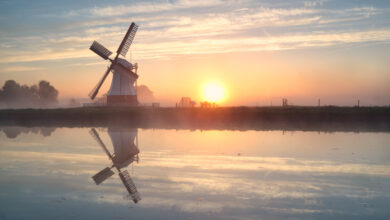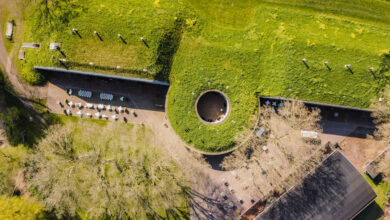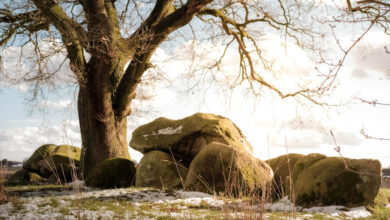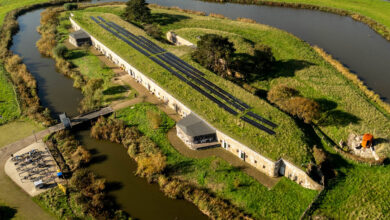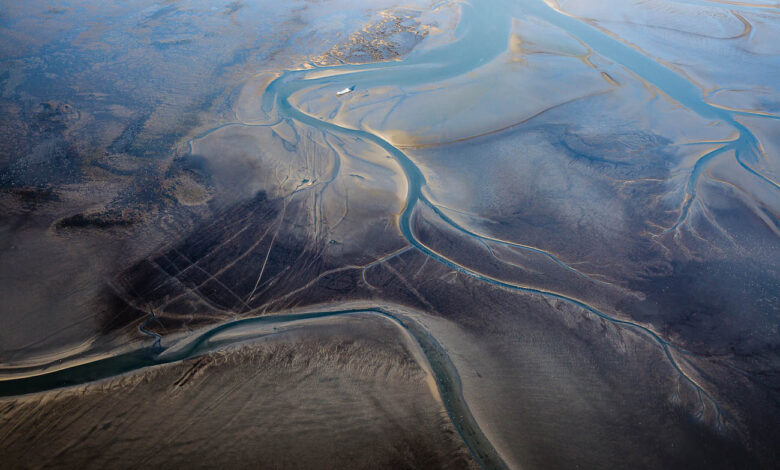
UNESCO World Heritage Sites of the Netherlands
The Netherlands, known for its charming canals, windmills and tulip fields, is not only a country of natural beauty and cultural riches but also home to several outstanding UNESCO World Heritage Sites. These sites have been recognized for their exceptional universal value, representing the country’s unique history, architecture and natural wonders. Join us on a virtual journey as we explore the diverse and captivating UNESCO sites that await you in the Netherlands.
Amsterdam canal ring (Grachtengordel)
Our exploration begins in the enchanting city of Amsterdam, where the Canal Ring, also known as the Grachtengordel, has been designated as a UNESCO World Heritage Site. The concentric network of canals, lined with elegant merchant houses from the 17th century, reflects the city’s Golden Age. Take a leisurely stroll along the canals or embark on a boat tour to fully appreciate this remarkable engineering feat and the architectural splendor that surrounds it.
Schokland and surroudings
Located in the province of Flevoland, Schokland and its surroundings are a testament to the ongoing battle between the Dutch and the sea. Once an inhabited island, Schokland was eventually abandoned due to constant flooding. This UNESCO site preserves the remains of the island and showcases the unique struggle against water management. Explore the museum and experience the stories of the people who once called Schokland home. An extension in 2021 expanded the site to include the Noordoostpolder, an area that also showcases the history of land reclamation and water management in the Netherlands.
Dutch water defence lines
The Dutch Water Defence Lines include the Nieuwe Hollandse Waterlinie and the Stelling van Amsterdam. These historic fortification systems were designed to protect the Netherlands from invasions. The Nieuwe Hollandse Waterlinie is a water-based defense line with forts, dikes and inundation areas. The Stelling van Amsterdam is a circular defense line surrounding Amsterdam, consisting of forts and defensive structures. Both UNESCO World Heritage Sites showcase Dutch engineering and the innovative use of water for defense purposes. Explore the well-preserved forts, cycle or hike along the routes and learn about the country’s military history and water management strategies.
Wadden Sea
Extending along the coast of the Netherlands, Germany and Denmark, the Wadden Sea is a natural wonder and the largest unbroken system of intertidal sand and mudflats in the world. The Wadden Sea, a UNESCO World Heritage Site, is home to a rich ecosystem, with numerous species of migratory birds, seals and marine life. Take a guided tour, go birdwatching, or even try your hand at mudflat hiking to experience the unique beauty and ecological significance of this pristine area.
Rietveld Schröder House
For architecture enthusiasts, a visit to the Rietveld Schröder House in Utrecht is a must. Designed by the renowned Dutch architect Gerrit Rietveld in 1924, this house represents the principles of the De Stijl art movement. The house is characterized by its minimalistic design, bold use of primary colors and flexible interior space. Step into the world of modernist architecture as you explore this iconic UNESCO site and its innovative design concepts.
Mill network at Kinderdijk-Elshout
Located in the province of South Holland, the Mill Network at Kinderdijk-Elshout comprises a group of 19 windmills dating back to the 18th century. These windmills were constructed to manage water levels in the area and prevent flooding. Today, they stand as iconic symbols of Dutch engineering and water management. Explore the mills, learn about their operation and gain insight into the country’s battle against water.
Historic area of Willemstad, inner city and harbour
Situated on the island of Curaçao in the Caribbean Sea, the Historic Area of Willemstad showcases an exceptional blend of European and Caribbean architectural styles. The vibrant, colorful buildings and historic fortifications reflect the island’s rich cultural heritage and its role as a major trading center during the Dutch colonial era. Stroll through the streets, visit the floating market and admire the unique fusion of cultures in this UNESCO-listed city.
Ir. D.F. Woudagemaal (D.F. Wouda Steam Pumping Station)
Located in Lemmer, Friesland, the Ir.D.F. Wouda Steam Pumping Station is an impressive feat of hydraulic engineering. Built in 1920, it served to drain excess water from the surrounding polders. The pumping station, powered by steam engines, is an outstanding example of early 20th-century industrial architecture. Take a guided tour and witness the monumental machines in action, gaining insight into the crucial role they played in water management.
Droogmakerij de Beemster (Beemster polder)
The Beemster Polder, situated in the province of North Holland, is a remarkable example of reclaimed land from the 17th century. This polder, meticulously planned and drained, transformed a shallow lake into fertile agricultural land. The symmetrical layout, with a network of canals and fields, represents the ideals of the Dutch Golden Age. Explore the picturesque landscape, visit the villages within the polder and learn about the history and significance of this UNESCO site.
Van Nelle Fabriek (Van Nelle Factory)
The Van Nelle Factory in Rotterdam is a masterpiece of modernist industrial architecture. Constructed in the 1920s, it revolutionized factory design with its functionalist principles, abundant natural light and innovative use of materials. The factory once produced coffee, tea and tobacco, but it now serves as a multi-purpose complex. Take a guided tour to appreciate the architectural brilliance of this UNESCO site and learn about its transformation.
Colonies of Benevolence
The Colonies of Benevolence are a series of agricultural and cultural settlements established in the 19th century to alleviate poverty and social issues. Located in the provinces of Drenthe and Overijssel, these colonies aimed to provide education, employment and a better life for the poor. The villages and landscapes associated with these colonies offer insights into the societal changes and innovative initiatives of the time.
Frontiers of the Roman Empire – The Lower German Limes
The Lower German Limes is a part of the extensive network of Roman border defenses known as the Limes. It represents the northernmost section of the Roman Empire’s frontier during the Roman era. Stretching across the Netherlands, the Lower German Limes protected the empire from invasions from Germanic tribes. The Lower German Limes includes various archaeological sites, fortifications, watchtowers and infrastructure that formed an integral part of the Roman defense system. These remnants bear witness to the Roman presence and the complex network of military, administrative and economic activities along the frontier.
Go and explore these UNESCO sites in the Netherlands
The Netherlands offers a diverse range of UNESCO World Heritage Sites, each showcasing a unique aspect of the country’s cultural and natural heritage. From the iconic canals of Amsterdam to the mesmerizing Wadden Sea, these sites provide a glimpse into the rich history, architectural brilliance and natural wonders that make the Netherlands a remarkable destination. Whether you’re a history buff, nature lover, or simply someone who appreciates beauty, the UNESCO sites of the Netherlands are waiting to be explored, admired and cherished. Plan your visit and embark on an unforgettable journey through the treasures of Dutch heritage.
